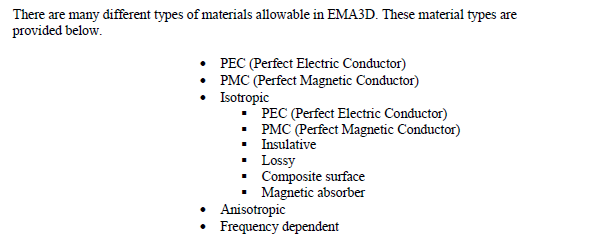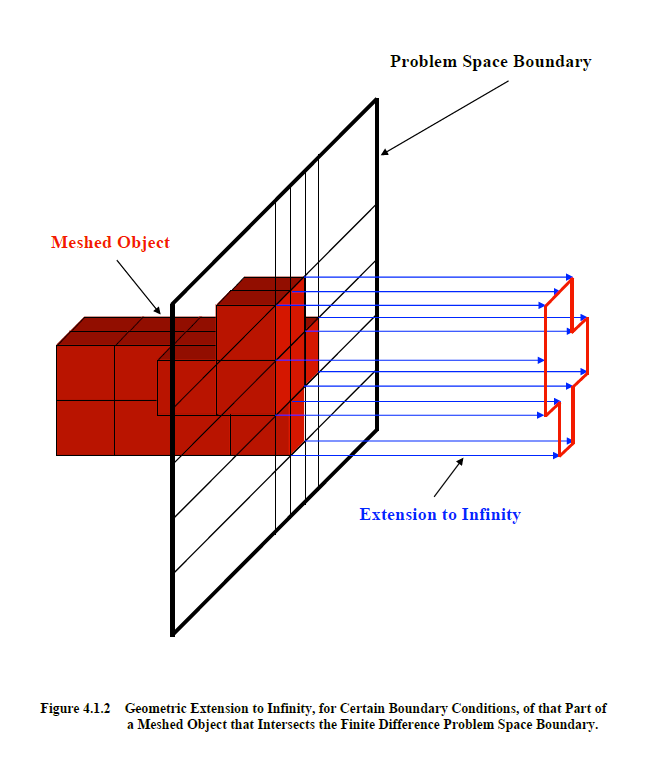Material Types |

Isotropic materials include both electric and magnetic insulating and lossy linear media, characterized by user-supplied values of the conductivity, the permittivity, the permeability, and the magnetic conductivity. For most isotropic materials, the permeability is equal to the vacuum value while the magnetic conductivity is zero. When specified in
EMA3D® the term "isotropic" always refers to a frequency independent material. Isotropic materials that are frequency dependent are specified as such.Composite materials are isotropic materials with a user-defined thickness that is much less than the lattice or mesh cell dimension in the cross-sectional direction. A composite material is not really a finite difference material, in the normal sense, but the implementation of a mathematical algorithm to simulate the presence of a thin isotropic and frequency independent material. The term, “thin”, implies a thickness within the range of zero up to a finite difference cell size in the cross-sectional direction. In addition to the thickness, the composite is characterized by the electric conductivity and the permeability. The effects of the conductivity are assumed to dominate those of the permittivity that is thus automatically set to the vacuum value. The magnetic conductivity is restricted to zero.

Anisotropic materials in EMA3D are linear and frequency independent, where the anisotropy can be complete (nonzero off-diagonal matrix elements). Anisotropic materials include both electric and magnetic lossy materials characterized by user-supplied entry values in the matrices of the conductivity, the permittivity, the permeability, and the magnetic conductivity tensors.
Frequency dependent materials, in EMA3D, are always electromagnetically isotropic and linear. Both electric and magnetic frequency dependent materials are allowed. The frequency dependent materials are characterized by the static conductivity, the infinite frequency permittivity, the infinite frequency permeability, and the static magnetic conductivity along with the sum of any number of first and second order rational functions. It is the responsibility of the user to determine the coefficients and the number of functions in each representation.
EMA3D - © 2025 EMA, Inc. Unauthorized use, distribution, or duplication is prohibited.